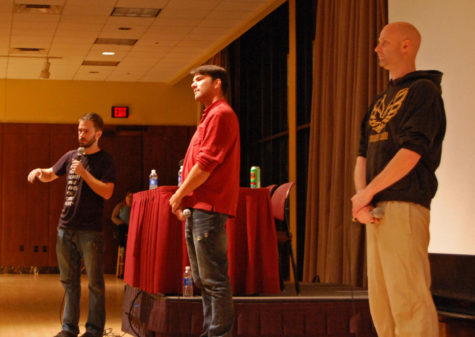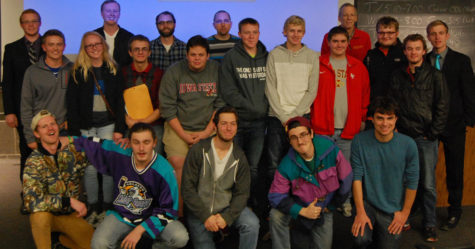Admit it: Video games can influence violence
October 3, 2013
A topic that has been lingering around the news media since the Columbine shooting in 1999, do video games influence real world violence?
Some news outlets credited “Grand Theft Auto V” as the influence for the Naval Yard shooting on the morning of Sept. 16; “Grand Theft Auto V” was released on Sept. 17. Gamers everywhere hammer their heads against their desks. Fingers punch keys in rapid fire; “Violence has existed well before first game of Pong,” they’d protest. Take away the guns, or something.
Douglas Gentile, psychology professor at Iowa State, said that like other gamers, he would love to believe that video games hold no consequence to violent behavior.
But his extensive research in how media, such as video games and movies, have an effect on adults and children paints a different picture.
“When there is some horrible tragedy we go into general shock,” Gentile said. “So we ask the question, ‘what is the cause?’ With human behavior there is never ‘what is the cause?’”
Gentile points to the right question: “What are the risk factors?”
Violence can not be pointed to one single cause, but a “multitude of conditions coming all at once.”
Playing violent video games or owning guns doesn’t transform someone into a ruthless killer, but they hold the potential to be risk factors in someone committing a violent act.
“These risk factors in themselves individually aren’t the cause, but it’s how they play into each other in combination,” Gentile said.
Gentile agrees, based on research, that video games can increase aggression. Humans learn by watching and practice. The more someone plays a violent video game and hits that adrenaline rush, the better they get at acting on that aggressive mentality.
But the severity of that risk factor is dependent on other risk factors in that person’s environment and the protective factors in place to counteract and cool down those risk factors. A child could engage in playing violent video games, but with the protective factor of a positive and supportive family structure in place it significantly decreases the probability of that child acting out aggression in a lethal form.
The problem remains in the news media, a risk factor itself. It is how they immortalize mass murders.
Detailing their methods, weapons used, and body count like a high score board for next would-be-shooter to best. The problem also remains within the video game industry-and gamers-refusal to accept research presenting video games as a factor in violent behavior.
If we collectively learn to approach this with a broader frame of view, we will begin to understand that human behavior does not abide to a cause and effect formula. It just takes one day where the worse happened, and it came from every single direction.















